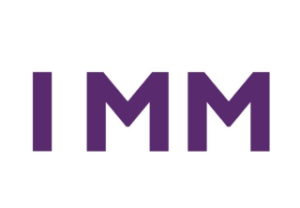Report on the IMM Tokyo’s Art Education Program under the Theme of Diversity in Local Communities
Text=Asako JINDO (Student Staff, Immigration Museum Tokyo)
Introduction: Background of the Program
In recent years, the number of foreign residents and children with roots overseas living in Tokyo has been increasing and multiculturalization within the city has been progressing. With this, the Immigration Museum Tokyo (IMM Tokyo), together with artists with overseas roots living in Japan, conducts art education programs under the theme of a multicultural society. This project is held at public elementary schools in Adachi City, Tokyo, with the aim of deepening people’s understanding of cultural diversity through art.
Program Implementation for Year 2023
This year, the third year of the Art Education Program at elementary schools, we held a day-long program (from 1st to 5th period) for students to immerse in the topic of cultural diversity through art under the theme, “thinking about the roles and connections of people in the local community where you live.” We did the program in two 5th-grade classes in each of the 2 public schools in Adachi City in January 2024. It became an opportunity for the students to meet adults that they would not normally encounter in their school life, imagine various people and connections as they engaged in artwork appreciation, and think about their roots through creating collaborative works with an artist from the Philippines.
In this report, we will look back on what the program was like, introducing the flow of the day which consisted of 4 steps of activities:(1) introduction of IMM Tokyo and its members, (2) dialogue-based artwork appreciation led by art communicators, (3) art workshop facilitated by artists with roots overseas, and (4) reflection workshop.
The day begins with “What is IMM Tokyo?”
The day begins with the introduction of IMM Tokyo and the self-introductions of the members involved. We first introduced IMM Tokyo as a mobile museum that has no specific location, which made students wonder what it is? We explained our activities by unraveling the three words, “immigration,” “museum,” and “Tokyo”. The anxious faces of the students relaxed a little as we finally told them,“Today, this elementary school will become a museum!”
IMM Tokyo works with artists who have roots overseas but are doing art practices in Japan. To start off the day with a chance to think about understanding cultural diversity, IMM Tokyo members introduced their roots related to where they have lived and their identities. The students learned that there are international students attending Tokyo University of the Arts who spent their childhood in Japan, and that some Japanese members have moved from one place to another throughout their lives and are now involved in IMM’s activities in Adachi Ward.
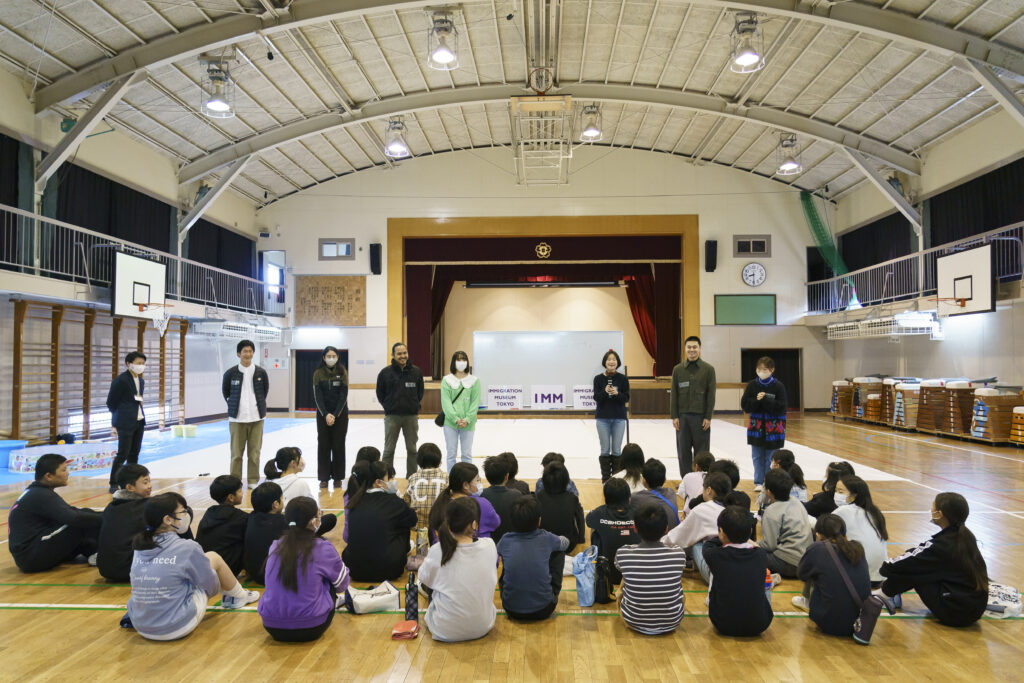
Step 1: Time to meet: Introduction of IMM and self-introduction by members
Discover the diversity of opinions among classmates through artwork appreciation.
The second part of the program was guided by members of the art communicators, Appreciate Approach. The students teamed up with about 10 members, and each was led by an art communicator in a dialogue about an artwork. Firstly, the participants selected a card from the art cards, which contain various artworks featuring individuals or things. Then, they introduced the individuals or things in their chosen art card to their classmates. There were a lot of interesting imaginative stories that came up. Next, they gathered in front of screens, looked at the paintings shown, and talked about them. They were asked, “What kind of people are in the paintings? What is the person doing? What is the relationship between this person and that person?” By imagining the relationships and connections among the people in the paintings, everyone expressed their ideas freely.
The homeroom teacher was pleased to see students, who normally do not speak up so much, actively expressing their opinions. One of the participating students commented, “It was interesting to see how differently each of us felt about the same painting, and how our friends’ opinions sometimes confirmed things that we had not thought of ourselves.”
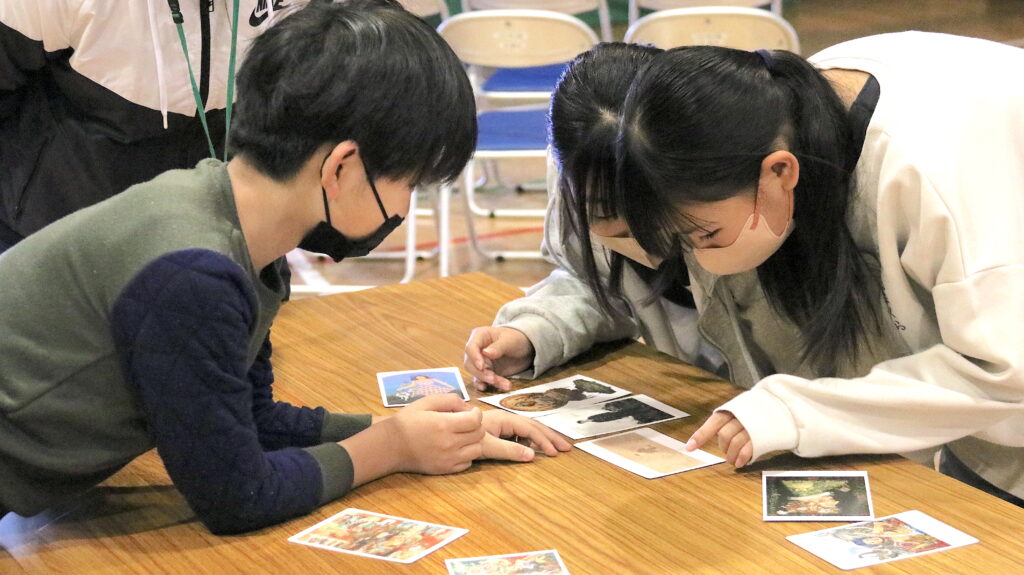
Step 2: Interactive Viewing in small groups
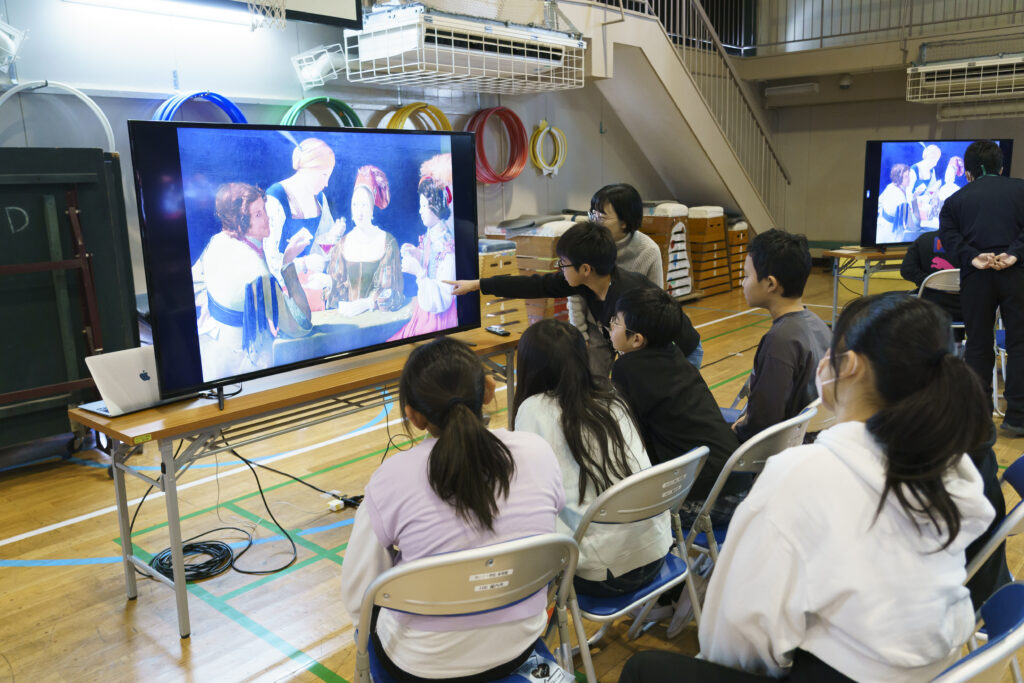
About the roots of Ralph (IMM 2023 Artist Workshop)
This year, Ralph C Lumbles, an artist from the Philippines and currently based in Yokohama for almost four years, led a workshop on creating large abstract paintings using soil from the school.
Ralph was born and raised in the countryside of the Philippines, often playing in nature. He mentioned that as an artist, he often uses natural materials in his work, which connects him to his roots of place and lifestyle. The introduction of his background and art practice provided the students an opportunity to confront the differences in environment, culture, and values they grew up with.
In addition, a video work that Ralph created in Kochi Prefecture was exhibited in the school gymnasium as a surprise for the students. This work was created together with the residents of the region and the makers of the Japanese paper (Tosa Washi), which was used in this workshop. Ralph said that he often collaborates not only with artists but also with various people to create artworks. When the students were told that this workshop is also a collaborative work, they were very excited about what it would be.
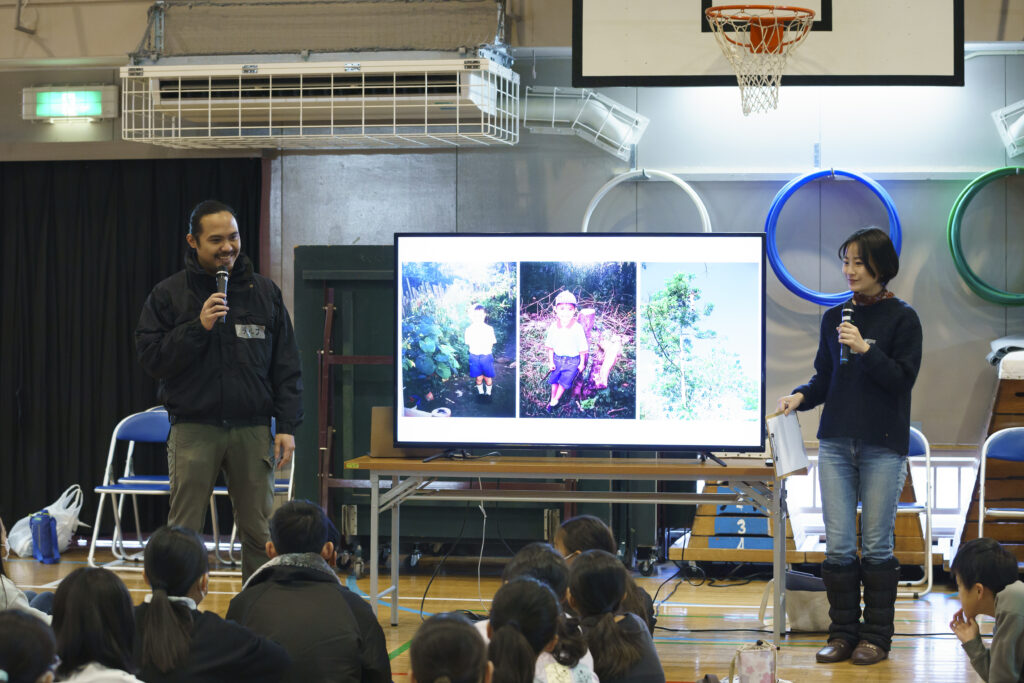
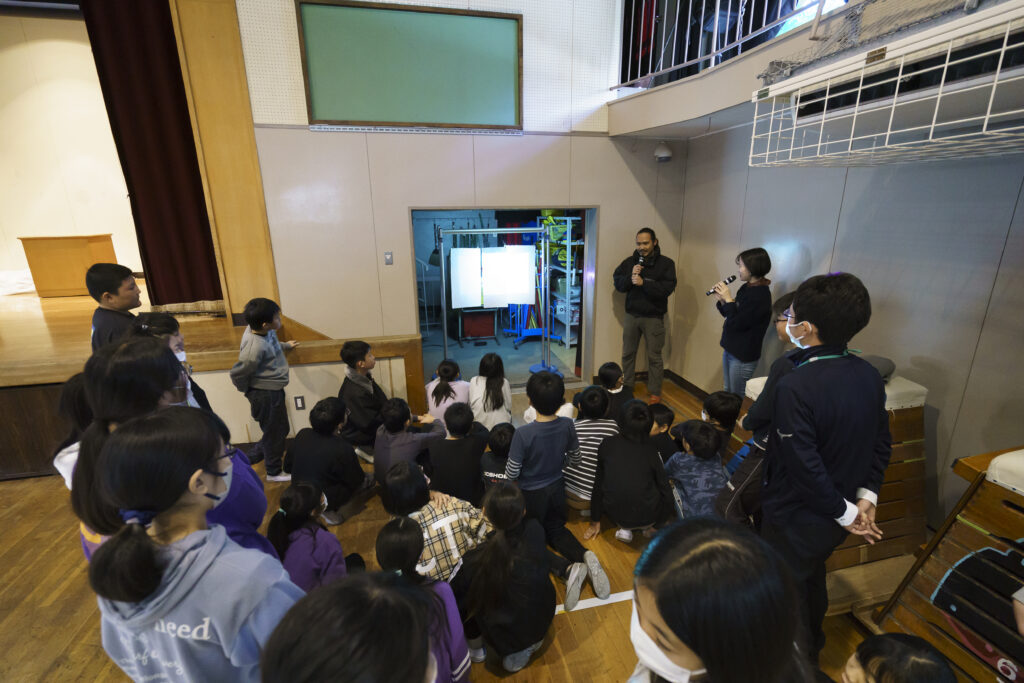
Step 3: Artist Workshop: Self-Instruction by Ralph C. Lumbres, an artist from Phillipine
Collaborative movement-based workshop: find two people who have a connection with you and try to make an equal triangle
First, as a warm-up for the workshop, students were asked to think about roles and occupations in the community they live in. They discussed what kind of places exist around their schools and in their neighborhoods, and made a list of candidates. Next, students were given a role or occupation in their town and asked to think about who else they would be connected to if they were in that position. By choosing two people who are connected and equally distant from each other, they create an equilateral triangle. The activity is called “Systems Triangle”. When someone moves, the person/s related to them moves accordingly, creating a ripple effect in everyone’s movements. The goal is to somehow achieve a state of balance where everyone’s movements come to a standstill. Once the balance is achieved, Ralph tries to move some individuals. What happens when Ralph moves the college students in the town? What about the hairdresser? The movement continued visualizing and physicalizing the connections within the town.
After this warm-up, students said, “It was difficult to think of connections, but I understood the movement,” and they also shared their imaginary stories why they chose the other two in making a triangle. For example, the everyday acts of shopping at the supermarket or visiting the local learning center are connected not only to the people they meet at those places, but also to the farmers who wholesale vegetables to the supermarket clerk since they get food from those places.

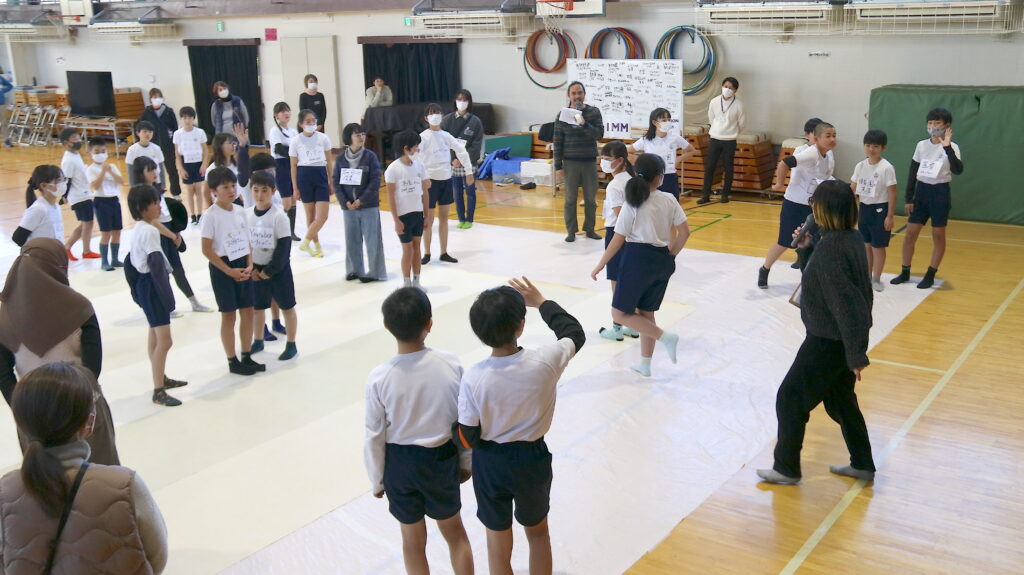
Step 3: Artist Workshop: Practicing “Systems Triangle” movement for the later activity
Collaborative movement-based workshop: an abstract painting appeared while I was playing with clay paints.
The movements that were done in the warm-up session are now practiced on the washi paper. Ralph wanted children living in Tokyo to have the opportunity to play with natural material, so he mixed soil from the school with water and glue to make clay paints. Students explored barefoot on a large piece of washi paper, the students were bewildered by their first touch, but seemed to embrace it. The shape of the clay paint kept changing with the movement of their triangles. In the end, they freely enjoyed the clay paints in their own playful ways.
After washing their feet clean, everyone looked at the finished work from the stage. They were asked, “What did you feel when you were doing it? What does the work look like?” Some said, “When I was doing it, I wasn’t thinking of making anything, but I was surprised to see the work being created,” and others said, “I didn’t like touching the clay paint at first, but it gradually became more interesting.” At the end, they seemed to have a lot of fun with Ralph.
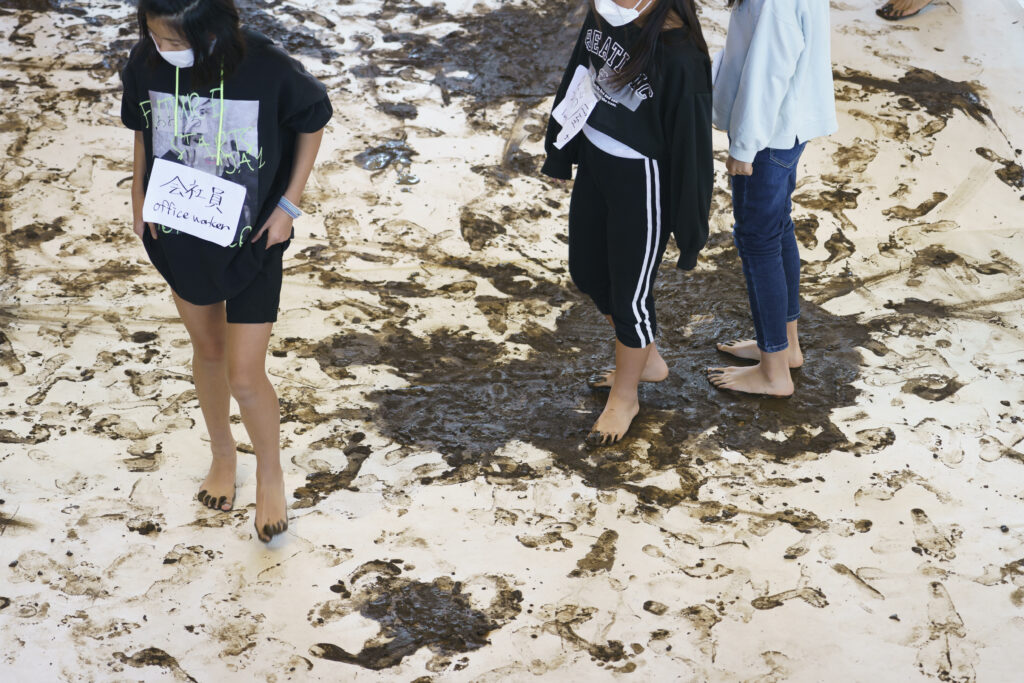
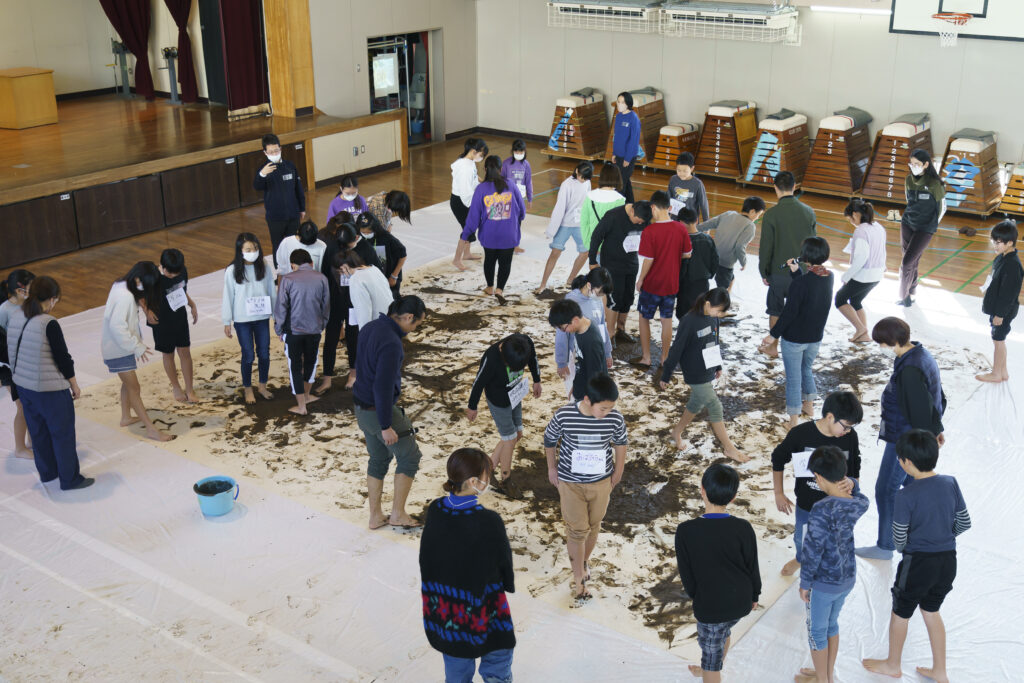
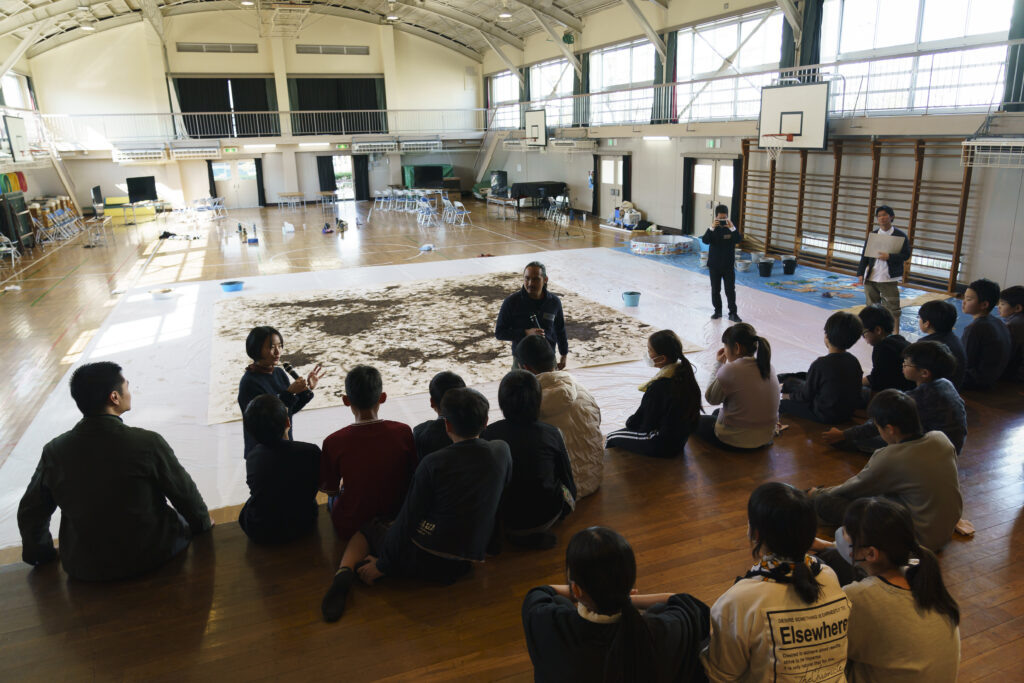
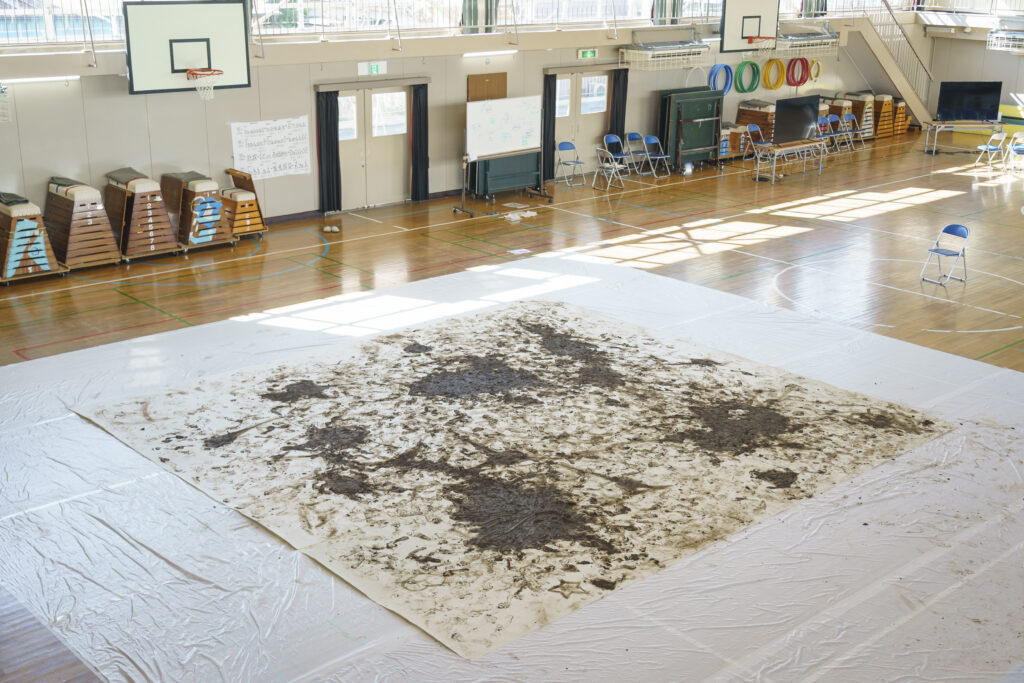
Step 3: Artist Workshop: an abstract painting showed up at the end!
Creating a leaflet to reflect on the experience of IMM
After lunch, we spent time in the classroom reflecting on the day’s activities, using a worksheet designed by IMM student staff to review the various triangles they found throughout the day and the connections they made in their own lives. They created a leaflet introducing the museum and completed it with a message to the person they want to give it to. It was impressive to see the students looking back on their experience while cooperating with nearby classmates and IMM staff.
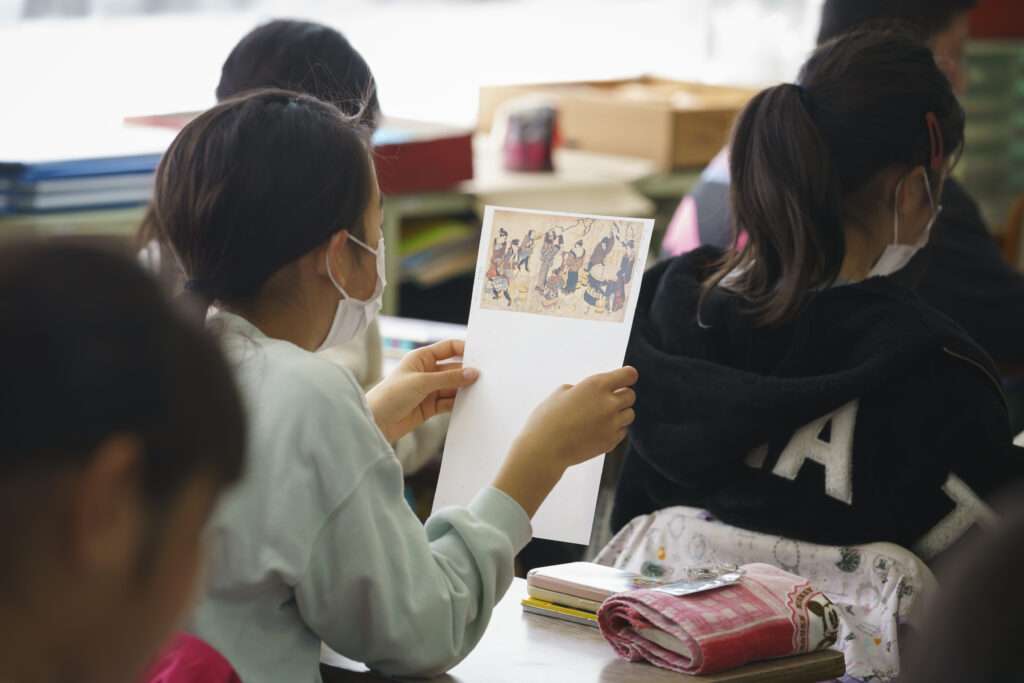
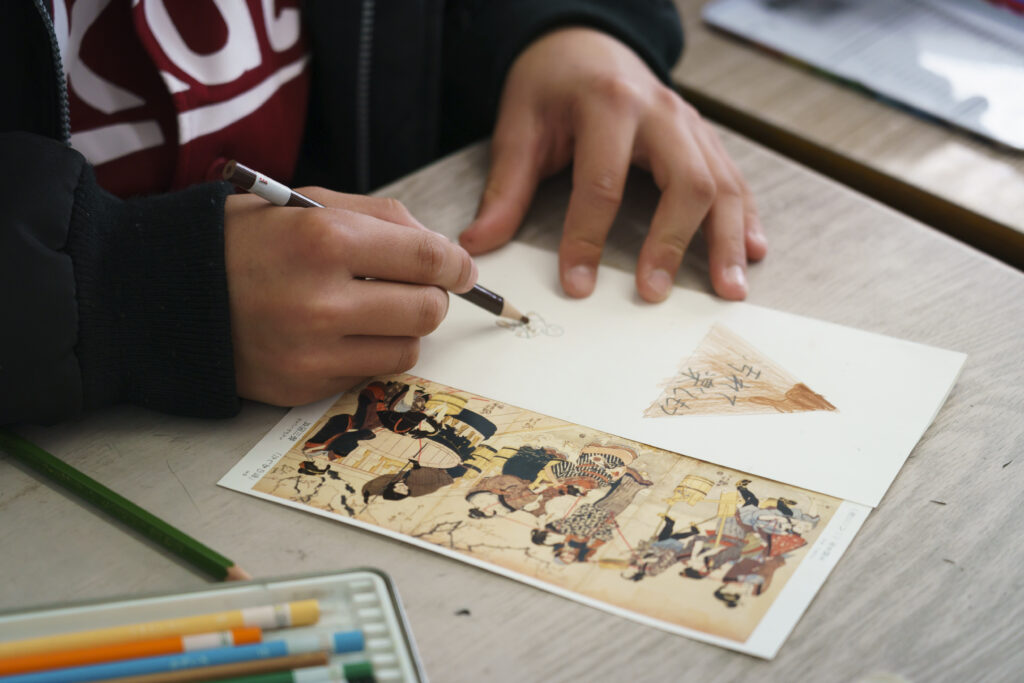
Step 4: Reflection Workshop: making a leaflet to introduce their experience of IMM
Summary
In this report, I have introduced the flow of the IMM program. I hope you have been able to grasp a little bit of what the day was like.
This program was produced by the IMM members through discussions with a collaborative artist, Ralph, staff members of the Adachi City Promotion Division, and art communicators. As a student staff member, I was anxious about whether the students would enjoy the program, but finally I could see their lively opinions during the artwork appreciation, their earnest listening to Ralph’s introduction of the activities, and their joy and confusion when they saw the clay paints in front of them. Not only were they having fun, but they were eliciting a wide range of emotions, and it was great to catch a glimpse of children who had been nervous at the beginning of the day enjoying themselves in a spontaneous manner.
After the one-day program, I heard comments from the children such as, “I didn’t like art classes, but today was a lot of fun!” and “I discovered the joy of expressing their imagination freely”. The homeroom teachers who observed the event gave positive feedbacks such as “I think the children were able to present their ideas freely because they felt safe to do so,” “I think this environment raised the children’s self-esteem,” and “I think the children felt that there are many ways to look at things.”
We hope that this experience will be some hints for those who participated in IMM Tokyo’s Art Education Program in their future lives when they encounter others. I would like to end this report with gratitude for everyone who is involved.

